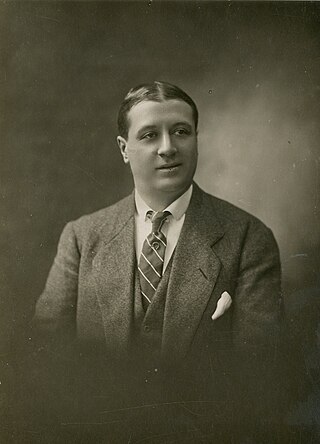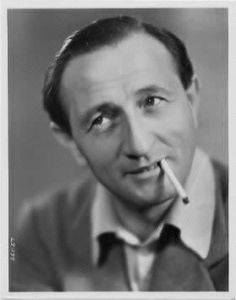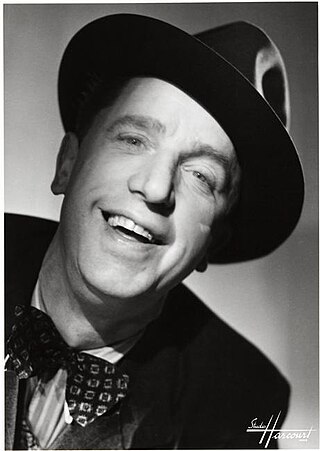Related Research Articles
Robert Florey was a French-American director, screenwriter, film journalist and actor.

Jules Auguste Muraire, whose stage name was Raimu, was a French actor. He is most famous for playing César in the 'Marseilles trilogy'.

Classical Hollywood cinema is a term used in film criticism to describe both a narrative and visual style of filmmaking which first developed in the 1910s to 1920s during the latter years of the silent film era. It then became characteristic of American cinema during the Golden Age of Hollywood, between roughly 1927 to 1969. It eventually became the most powerful and pervasive style of filmmaking worldwide.

Carmine Gallone was an early Italian film director, screenwriter, and film producer, who was also controversial for his works of pro-Fascist propaganda and historical revisionism. Considered one of Italian cinema's leading early directors, he directed over 120 films in his fifty-year career between 1913 and 1963.

Odette Joyeux was a French actress, playwright and novelist.

Josette Day was a French film actress.
Georges Grey, born Georges-Jean-Joseph Gacon (1911–1954) was a French actor. In 1948 he starred in the film The Lame Devil under Sacha Guitry.
Édouard Delmont was a French actor born Édouard Marius Autran in Marseille. He died in Cannes at age 72.

Jules Berry was a French actor.
Roger Karl was a French actor. Karl was born Roger Trouvé in Bourges.
René Sylviano (1903–1993) was a French composer who worked on around eighty film scores.

Jeanne Fusier-Gir (1885–1973) was a French stage and film actress. She was married to the painter Charles Gir, and was the mother of the film director François Gir.

Henri Marius Roger Bourrelly, known by his stage name of Rellys, was a French actor.
Frédéric Mariotti was a French stage and film actor whose career spanned more than four decades through the early silent film era into the early 1950s.
Madeleine Suffel (1899–1974) was a French film and stage actress. She played supporting roles in a number of films from the early 1930s onwards.
André Gabriello (1896–1975) was a French film actor. A character actor known for his supporting roles, notable appearances included Jean Renoir's Partie de campagne (1936) and Maurice Tourneur's Cecile Is Dead (1944). He was the father of the actress Suzanne Gabriello.
Jean Joffre (1872–1944) often styled simply as Joffre was a French film and stage actor. A character actor he played a variety of supporting roles in theatre and the cinema during his career. His final screen appearance was in the 1943 film The Count of Monte Cristo.

The Eleventh Hour Guest is a 1945 French mystery film directed by Maurice Cloche and starring Jean Tissier, Blanchette Brunoy and Roger Pigaut. It was shot at the Billancourt Studios in Paris. The film's sets were designed by the art directors Maurice Colasson and Georges Wakhévitch.
René Sti (1897-1951) was a Romanian-born French screenwriter and film director. He was the son-in-law of the actor André Dubosc. Of Jewish heritage the German Occupation of France in 1940 brought a halt to his film career. He was subsequently interned in Drancy internment camp. Having survived the war, he returned to filmmaking with his first post-war release Chinese Quarter in 1947.

Narcisse is a 1940 French comedy film directed by Ayres d'Aguiar and starring Rellys, Paul Azaïs and Monique Rolland. It was shot at the Billancourt Studios in Paris and the Saint-Laurent-du-Var Studios in Nice. The film's sets were designed by the art director Lucien Aguettand. It is a remake of the 1938 British film It's in the Air directed by Anthony Kimmins and re-used footage from the earlier film. It was produced during the Phoney War period and was released in March 1940, a few weeks before the beginning of the Battle of France.
References
- ↑ https://www.unifrance.org/annuaires/personne/128957/ayres-d-aguiar
- ↑ Guillaume-Grimaud p.205
- ↑ Rège p.341